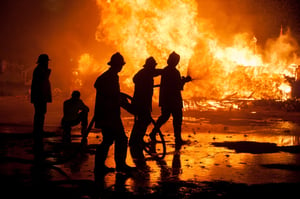 Public safety is a huge concern for municipal offices. When citizens feel safe, they can focus on leading their lives and pursuing happiness. This makes for happier constituents and fewer disruptions.
Public safety is a huge concern for municipal offices. When citizens feel safe, they can focus on leading their lives and pursuing happiness. This makes for happier constituents and fewer disruptions.
But, how can municipalities make their communities safer so that citizens will feel safe?
There are a lot of ways that municipal agencies can improve safety in their communities. One surprising method is to use GPS fleet monitoring for key municipal services. Here are a few ways that GPS tracking can make your city safer:
1: Improved Efficiency for Road Debris Removal
Trash, roadkill, and automobile wreckage left in the street can create navigation hazards for commuters in any city. With the limited time and resources available to a municipality, keeping roads clear of all hazardous debris can be a challenge.
GPS fleet monitoring helps road maintenance crews find the fastest routes to areas where hazardous road debris has been reported. Additionally, fleet managers can track where road crews are while on shift, allowing them to check for excessive idle or stop time for each road crew.
This helps improve efficiency for road debris removal operations so more debris can be cleared each day, increasing road safety for a city’s drivers.
2: Optimized Police Patrol Route Coverage
The mere presence of a police patrol car can help to deter criminal activity from taking place. However, most municipalities can’t afford to have a patrol car on every street corner. To create the perception of increased police presence, it’s important to have a well-optimized patrol route schedule that ensures consistent coverage for the whole city.

GPS fleet monitoring solutions can help municipalities ensure that no street goes without a police presence for too long.
By using special software plugins such as RASTRAC’s Map Marker Plugin, police dispatch operators can get a color-coded, aging map that lets them see at a glance which streets have been patrolled recently and which ones have been neglected for a while.
This tool allows dispatch to redirect patrol cars as needed to provide coverage to key parts of the city and increase the perception of police presence. In turn, this can act as a deterrent to criminal activity.
3: Faster Emergency Response Times
 With GPS fleet tracking, emergency services can increase their response speed, helping to save lives in an emergency.
With GPS fleet tracking, emergency services can increase their response speed, helping to save lives in an emergency.
For example, police dispatch can use GPS tracking to quickly identify which squad car is the closest to a given crime scene. Rather than having to call 10 different squad cars to ask where each one is, dispatch can simply pick out the closest car and send them right away.
Additionally, GPS tracking can allow emergency service vehicles to find the most efficient routes to a given emergency location. For example, if a road is closed down for construction, a GPS device can let the driver quickly find a different route to take. This saves time on consulting a map or driving around aimlessly looking for another path.
These capabilities help to reduce response time in an emergency, which can mean more lives saved in situations where every minute counts.
The above three items are just a few of the ways that GPS fleet monitoring can contribute to municipal safety. Please read our guide to making law enforcement and our communities safer with GPS to learn more.






